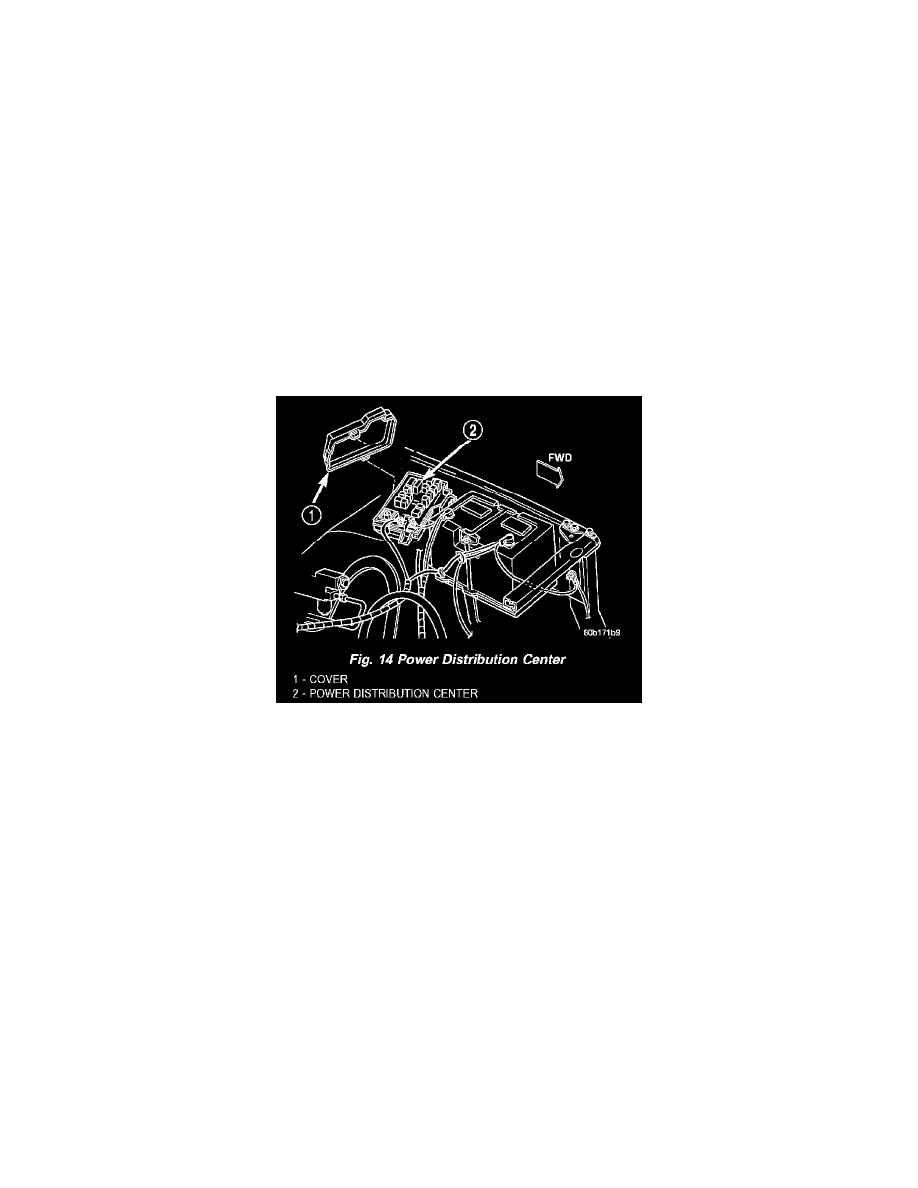RAM 2500 Truck 2WD L6-5.9L DSL Turbo VIN C (2002)

Headlamp Relay: Description and Operation
HEADLAMP RELAY
The headlamp (or security) relay is a International Standards Organization (ISO) micro-relay. The terminal designations and functions are the same as a
conventional ISO relay. However, the micro-relay terminal orientation (or footprint) is different, current capacity is lower, and the relay case dimensions
are smaller than those of the conventional ISO relay.
The headlamp relay is a electromechanical device that switches battery current to the headlamps when the high-line or premium Central Timer Module
(CTM) grounds the relay coil.
The headlamp relay (also known as the security relay) is located in the Power Distribution Center (PDC) in the engine compartment near the battery. The
headlamp relay is normally activated by the Central Timer Module (CTM) based upon inputs from the Remote Keyless Entry (RKE) panic mode feature.
However, it can also be activated by an output of the CTM to flash the headlamp low beams to provide a highly visible indication that unauthorized
vehicle use or tampering has been detected.
The headlamp (or security) relay is located in the Power Distribution Center (PDC), in the engine compartment. Refer to the PDC label for relay
identification and location.
The headlamp relay cannot be repaired and, if faulty or damaged, it must be replaced.
Fig. 14 Power Distribution Center
The headlamp (or security) relay is located in the Power Distribution Center (PDC) near the battery in the engine compartment. See the fuse and relay
layout label affixed to the inside surface of the PDC cover for headlamp relay identification and location. The headlamp relay is a conventional
International Standards Organization (ISO) micro relay. Relays conforming to the ISO specifications have common physical dimensions, current
capacities, terminal patterns, and terminal functions. The relay is contained within a small, rectangular, molded plastic housing. The relay is connected to
all of the required inputs and outputs through its PDC receptacle by five male spade-type terminals that extend from the bottom of the relay base. The
ISO designation for each terminal is molded into the base adjacent to the terminal.
The ISO terminal designations are as follows:
*
30 (Common Feed) - This terminal is connected to the movable contact point of the relay.
*
85 (Coil Ground) - This terminal is connected to the ground feed side of the relay control coil.
*
86 (Coil Battery) - This terminal is connected to the battery feed side of the relay control coil.
*
87 (Normally Open) - This terminal is connected to the normally open fixed contact point of the relay.
*
87A (Normally Closed) - This terminal is connected to the normally closed fixed contact point of the relay
The headlamp relay cannot be adjusted or repaired. If the relay is damaged or faulty, it must be replaced.
The headlamp (or security) relay is an electromechanical switch that uses a low current input from the high-line or premium Central Timer Module (
CTM) to control a high current output to the head-lamps. The movable common feed contact point is held against the fixed normally closed contact
point by spring pressure. When the relay coil is energized, an electromagnetic field is produced by the coil windings. This electromagnetic field draws
the movable relay contact point away from the fixed normally closed contact point, and holds it against the fixed normally open contact point. When the
relay coil is de-energized, spring pressure returns the movable contact point back against the fixed normally closed contact point. A resistor or diode is
connected in parallel with the relay coil in the relay, and helps to dissipate voltage spikes and electromagnetic interference that can be generated as the
electromagnetic field of the relay coil collapses.
